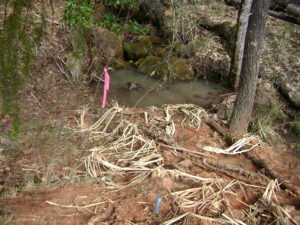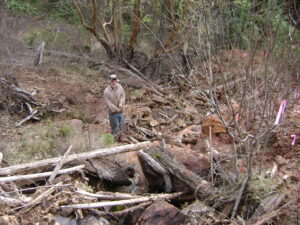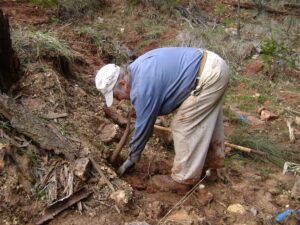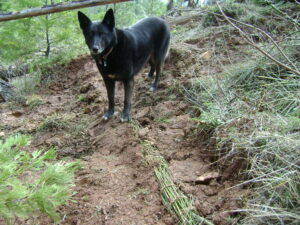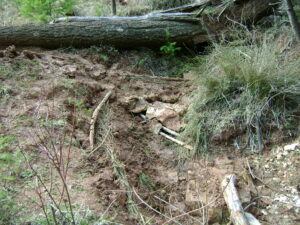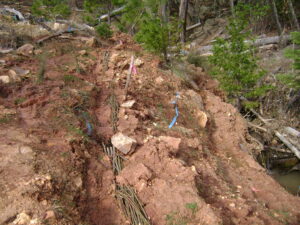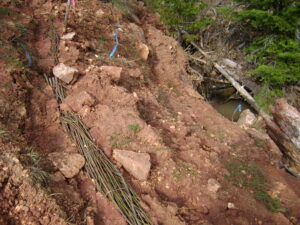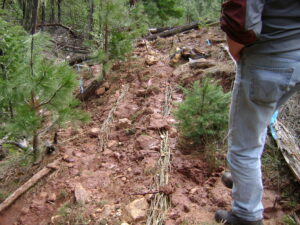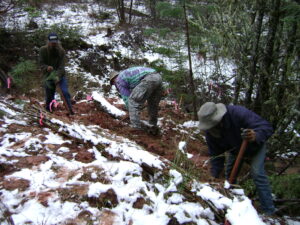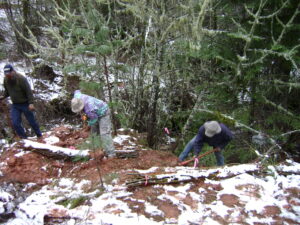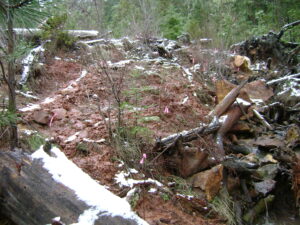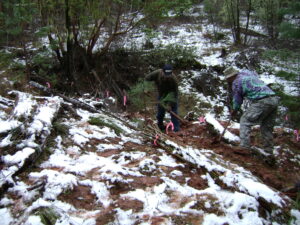Watershed Landslide Project
Efforts to stabilize a landslide severely impacting water quality
One of the worst things negatively influencing aquatic habitats is degraded water quality. One of the biggest contributors to poor water quality are the perennial landslides of our region. Humanly induced landslides resulting from the short rotation intense logging taking place in the Pacific NW is a major factor in the decline in salmon runs. SURCP had the opportunity to experiment with a fairly small landslide to see if we could mitigate the problem. This is our story.
In the head waters of an Elk Creek South Umpqua watershed a clear cut adjacent to Umpqua National Forest undermined a clay deposit on the Federally managed lands. The heavy clay deposit had a spring of water above it. When root systems from the logged land decayed they destabilized the soils. An entire ten acre area slipped directly into an unnamed stream at the base of the field. Each year the slide was contributing a tremendous amount of clay silt into spawning habitat. Siltation on a salmon nest (a redd) smothers the eggs and prevents emergence of the young salmon alevins.
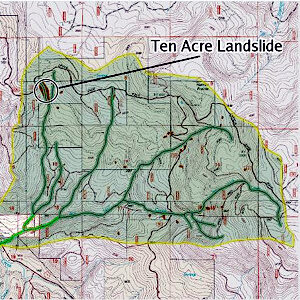
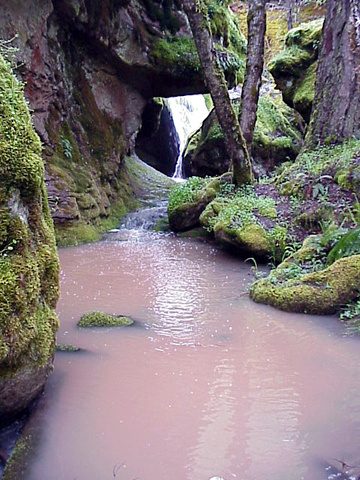
This water quality image illustrates the problem. The red clay siltation has duel effect. The heavier particles settle on the stream bottom forming a thick sticky layer on its surface. Smaller particles remain suspended in the water for long periods of time. It is the aquatic version of smog air pollution. After consideration it was decided that the best possible solution to the problem was to plant a variety of vegetation that flourished with wet roots. Samples of indigenous willows were glean from nearby sources. They were then bundled into wattles and partially buried. Willow is notorious for quick and deep rooting under proper conditions. The effort was successful but was soon undermined. Free range cattle were using the spring for watering and also found the young willow start tender and delicious. Phase two was to surround the area with a solar charged electric fence. That failed when the charger system was stolen from this somewhat remote area. In the end we installed a system not easily removed. Through trial and error we succeeded. Only time will tell if the experiment will be completely capable of stabilizing the slide long enough for a complete deep root system of other native species will take hold.
A Gallery of Project Images
